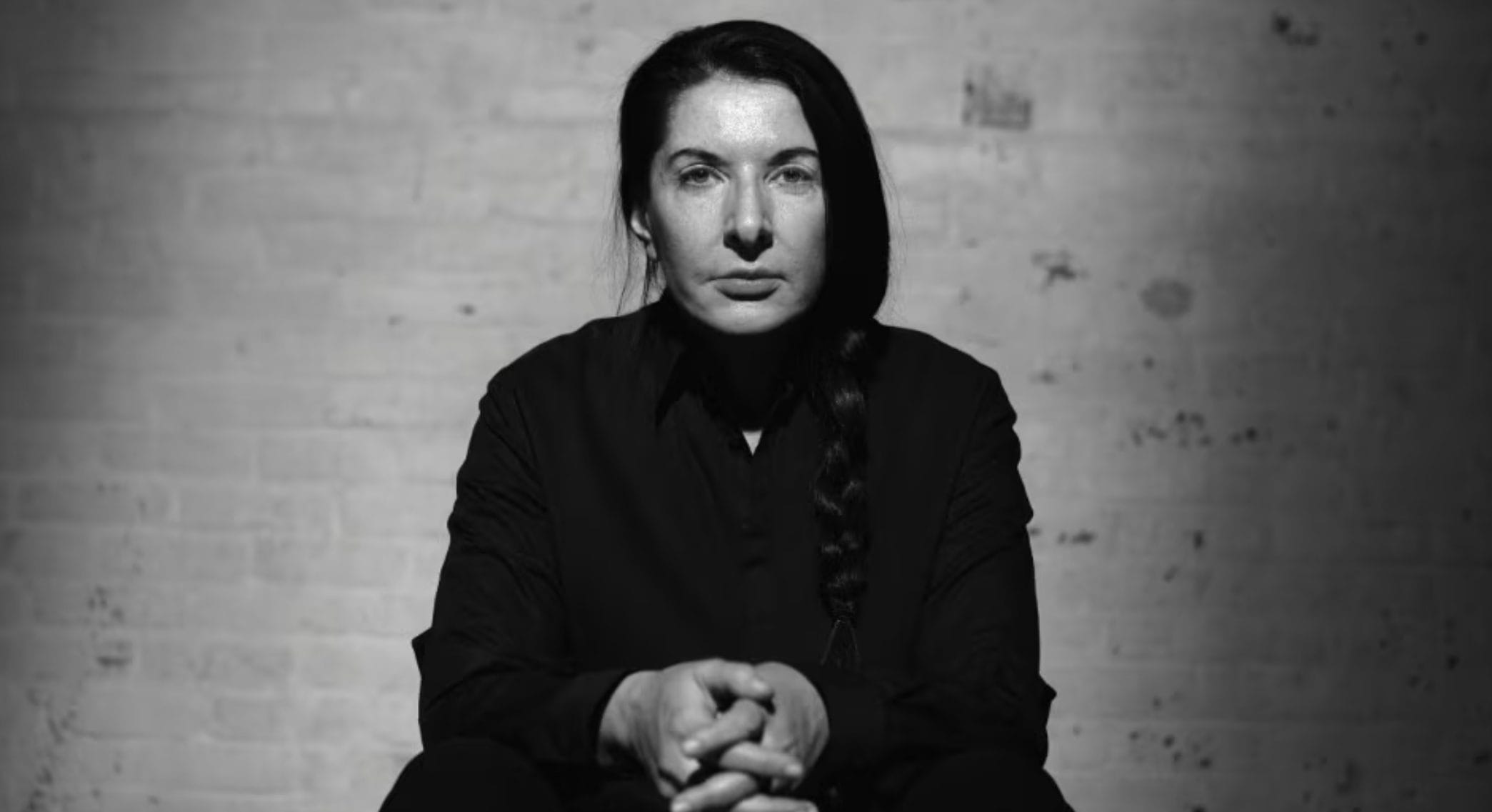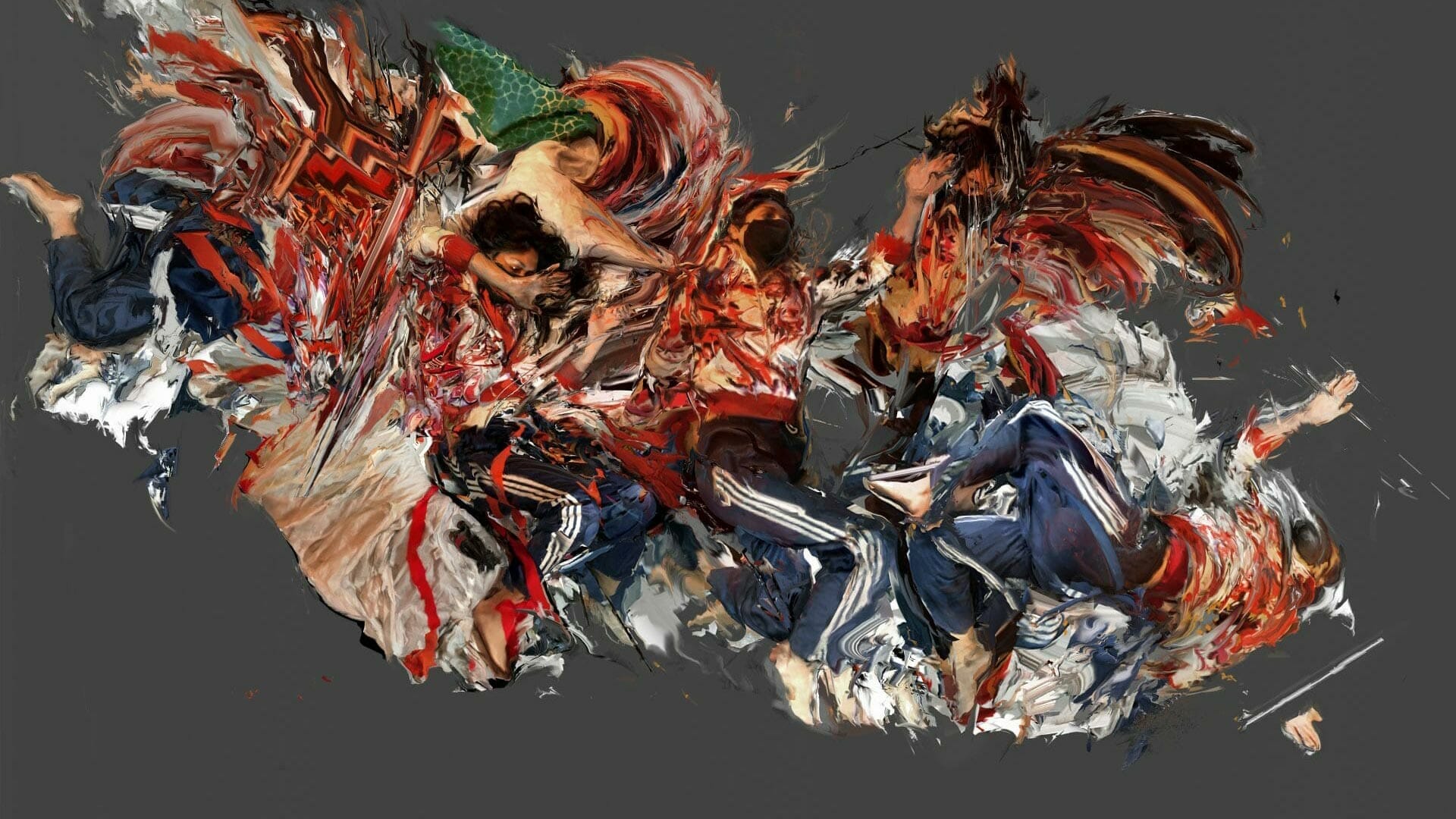
Lucas Aguirre in conversation with karmacowboy
KC: Hi Lucas, thank you for taking the time to chat, I’ve been looking forward to this!
When I first came across your work, the first piece I saw was Rescatarse (Save Yourself), I stopped dead in my tracks. It felt so fresh, original, and powerful. Like a sudden rush of blood to the head. That sent me down the rabbit hole of discovering your entire body of work and connecting with you, and here we are two years later.
As a way of kickstarting this conversation, let me ask you an impossible question: Out of all your pieces, can you identify the one that you currently hold most dear? What makes it special to you? How does it reflect your artistic vision? And what’s the origin story of this piece?
LUCAS: Well, first of all, thanks for the kind words on Rescatarse. I’ve felt the same with certain artworks throughout my life and it’s amazing when someone gets that feeling from something I created.
The first piece that came to mind was Viejos Problemas, Nuevas Soluciones (Old Problems, New Solutions) from 2020, which I completed a few months before entering the cryptoart scene. I think it came to me because it was part of a breakthrough moment.

For me, creating this piece was the first time I felt a “this is it” moment, after a year of experimenting with 3D scanning / photogrammetry as an addition to my previous workflow of sculpting and painting in VR software. I had been trying to mix my traditional art experience with the possibilities of VR for the previous two years, since 2017, but I wasn’t able to get results I fully vibed with until I started incorporating fragments of the physical world to the workflow using methods like 3D scanning. Suddenly I didn’t need to fully sculpt a piece (I don’t consider myself a sculptor), but I was able to begin from fragments in the physical world. So, I started to experiment with it, had some good results, did some collaborations and experiments, but I still felt like I was just testing out the possibilities.
One day I had an image in my mind of a person mixed with a motorbike. I don’t know why but this made me feel extremely excited. In those days I didn’t have a 3D scanner, so I started searching online for free 3D models to play with in VR. After a day or so, I got the assets to start playing with, and I began to create a rough composition of what I had in my mind. But, as is often the case, things didn’t go the way I wanted, and I wasn’t getting happy with the results. The bikes didn’t feel right when mixed with the models, and the whole thing wasn’t going anywhere, until at some point I took off the VR headset and saw the scene from my computer screen, from a different point of view. Suddenly the composition was there, almost perfect.
I knew it right away, I felt this “this is it” eureka kind of moment. The liminal zone between 3D and 2D, the pictorial, painterly, 2D space, intertwining with the possibilities of the volumetric, three-dimensional space. It was a sculpt, but it felt like a painting. The vibe I got from this scene was the same one I felt watching the riots scenes from the revolts in Chile in the end of 2019. And at the same time, I felt that the figure of the man mixed with the bike was related to the feeling of machine eating the human, the flesh mutating under the influence of external and inhumane forces, which is how I felt watching the riots live in the media at the time.
I was also speaking with friends there who told me how they were creating new ways of resistance against state brutality, and how some places of the city that were previously forbidden for public use had now been transformed into zones where people met and formed new relationships across old boundaries. I saw, like in the Hong Kong revolts, people organizing in new, unpredictable ways to stand against the aggression of the power apparatus. So, new solutions to old problems, both socially on a global scale and stylistically on a personal level. All this came into my mind at the same time, and I sensed that I was getting close to a creative space that felt like a genuine personal expression.
KC: Wow, I love that story. In many ways it’s the prototypical story of the artist in search of a voice that is entirely and uniquely theirs. It’s pretty amazing that you found that Eureka moment. Going back to Viejos Problemas, Nuevas Soluciones, in my mind it is one of five pieces belonging to the same family of works, stylistically and thematically. The other four are Constructive Instability, Una Estabilidad Constructiva II, Rescatarse, and Procesión (pictured clockwise from top left below).

To me, they capture a universal existential experience: the moments just before, during, and after a violent confrontation with the world. That confrontation could be deeply existential, like birth or death, or it could be personal shocks like a breakup or losing your job, or it could be broader societal shocks, like being subjected to police brutality, the breakout of a global pandemic, or a sudden invasion by a hostile power. In every instance, every human being goes through an avalanche of raw emotions and physical responses to defend itself, and then to reorient itself as expectations are shattered and a new equilibrium must be found. To me, these 5 pieces are fantastic freeze frames of that shared human experience, and I have never seen it brought to life with such power, sensitivity, and kinetic energy anywhere else.
LUCAS: I love your interpretation. Spectators that are really into the artwork expand what we as artists do. Because for me the work speaks about a particular narrative, but your interpretation shows that it can go far beyond my personal intentions, and that is a very beautiful thing. Some art pieces are like your children, you bring them into this world, but you cannot foresee what they will become.
That polysemic aspect of contemporary art is one of the main reasons I feel attracted to it. Skygolpe said something like “art is one of the few zones that are away from my rational mind” and that kind of mystery, in a way, is what drives me to make art. In my 30s, I was working as an illustrator when I suddenly felt that I could not continue because I really craved to create works that were not tied to clear and defined narratives. It was a tough decision because I worked as an illustrator for many years, but ultimately it gave me the time to get into that zone of unclear definitions.
KC: Speaking of mysteries, what does your creative process look like? Do you have a clear idea of where you want to go from the start, or do you show up every day and let the process unfold?
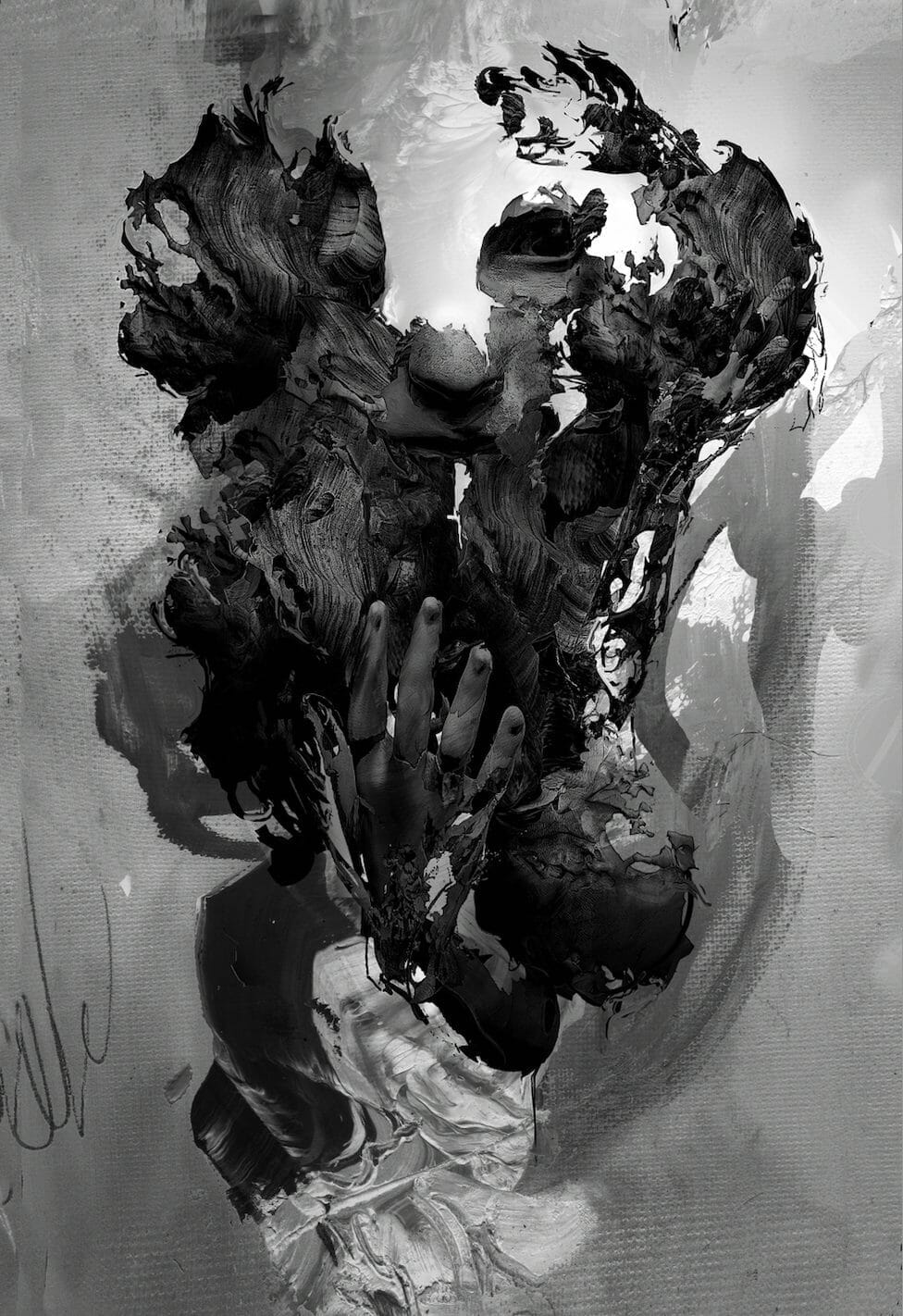
LUCAS: I try to work on art every day, whether it is by doing, by reading, thinking, or experiencing things. But it seems I am not a very methodical person, at least in a narrow sense. When I’m not able to be open and I live mechanically and repetitively, I feel like I am wasting opportunities. Being open to the world, sensing things and welcoming new impressions is crucial to me.Being vulnerable while also being a white, middle-aged, middle-class Western man who is supposed to follow certain routines and have certain habits is a balance I am learning daily.
I live in Argentina, and it’s rough here for a lot of people, so being receptive to what happens locally is essential. It’s easy and sometimes tempting to isolate yourself in the art and cryptoart bubble, but in the end, the art pieces will suffer from it. I have to connect with life, the struggles of people. The courage and the spirit around here is something to behold, and this inspires me the most. As Argentinians, we are used to living and working in many ways, we are shapeshifters, juggling opportunities to make a living in every way we can. Argentina is really a case study in uncertainty and human adaption, and as the world at large gets more uncertain and volatile, I feel like the things we have experienced in Argentina for decades are becoming part of life and the human experience in the rest of the world.
To answer your question more directly, my approach to every process differs. Some of them come from a technical quest, a formal need, but I reckon the emotional aspect is the main engine for my work. Those aspects of life that move me in any way, pleasant or not, can be fuel for the next pursuit. And many times, they appear suddenly, like a revelation, but sometimes they are slowly built through the years with many trials and errors. So, I cannot describe a typical day of creation since they change all the time. Sometimes I am painting and drawing like a maniac, and sometimes I don’t stain my hands for months, but I dwell in the digital realm. The key thing for me when I create is to reach a certain level of excitement and connection, irrespective of the method or the medium.
This kind of inconsistent process was a struggle for me in the past. I didn´t feel like a legitimate “drawing artist”, “painter”, or “digital artist”, but I recognized myself in elements of these constructs. It was only when I discovered the cryptoart space that I felt, “Oh, this is my space, a lot of nerd outcasts that are crawling out from under their rocks to get together around this welcoming fire”.
KC: Before diving further into your experience in the cryptoart scene, I’d love to take a few steps back to hear about the foundations that shaped you as a human and as an artist. Could you share some memories from your early years that shaped you?
LUCAS: When I was three years old, I did a drawing that was a sudden evolution of what I was previously doing. Both my parents noticed this, and then I saw it myself. It’s one of my first memories, and I thought to myself, “I did that and they love it.” I am not afraid to say that I make art to be loved. It is not my main aim, but I reckon it’s an important piece of what I seek, a basic human need, isn’t it?
I feel that we all feel disconnected from “something,” we crave a state of union in one way or another. Exploring the limits of myself in relation to others is an essential part of my quest. Where do I end? Where do you start? What do we share? In the end, it’s a quest to feel less alone.
KC: I recognize the fundamental need to feel loved, as well as a related but slightly different need: to know that someone else sees the world like you do. No one can truly feel or grasp you from the inside, but art can sometimes be the bridge that brings us very close to other human beings and lets us see and feel the world the way they do – and vice versa.
LUCAS: Yeah, that’s magical. Carl Sagan saying this about books pretty much sums it all up: “What an astonishing thing a book is. It’s a flat object made from a tree with flexible parts on which are imprinted lots of funny dark squiggles. But one glance at it and you’re inside the mind of another person, maybe somebody dead for thousands of years.”

LUCAS: I have drawn for as long as I can remember, even before I can remember, in fact. So, after the hell/desert of primary and secondary school, I went directly into university art school and found my peers. I studied visual arts and specialized in painting. But I was never interested in the academic world and dropped out of it in the final year to work as a freelance artist.
I did 15 years of freelancing, doing almost everything in the visual art fields. After some years working as an illustrator, I felt that I was missing some part of art creation and began reconnecting with the traditional art world, doing artistic residencies, something I continue to do. After some years of studying, I began working with some local galleries in the small local art market, never being able to fully live off it, and never feeling fully a part of it. I always felt like an outsider, and in some ways, I still feel like one – and sometimes I like the feeling. It’s a tension between feeling accepted and not feeling alienated from yourself by external pressures.
During the pandemic, I lost my three jobs – freelancing with VR, muralism, and art teaching – and suddenly I had all the time in the world and very little money to live from. So, when I discovered cryptoart and understood that it was possible to make a living as a cryptoartist, I went fully into it. I spent a third of my savings to mint my first works after being selected as a SuperRare artist, and after the first sale, I went full-time into art creation. I am so grateful for this opportunity in my forties. It was truly unexpected. Working as an artist here in Argentina is extremely rare. Most of us live thinking that we will never be able to do art for a living, so I am aware that I must use this opportunity in the best way I can.
KC: What was the first NFT you sold, and to whom?
LUCAS: The first work I sold was Lanza (Spear), which was also my first tokenized piece. And it was sold to the collector Kaizer. I found him after looking at who bought an Etiene Crauss piece that I really liked, thinking, “This guy has taste,” and when he contacted me showing interest in the piece it was awesome. We started to talk, and he told me he wasn´t into art collecting before, but that he loved and appreciated my work, and then I knew that this space can connect artists and collectors in a less snobbish way than on the traditional art scene.
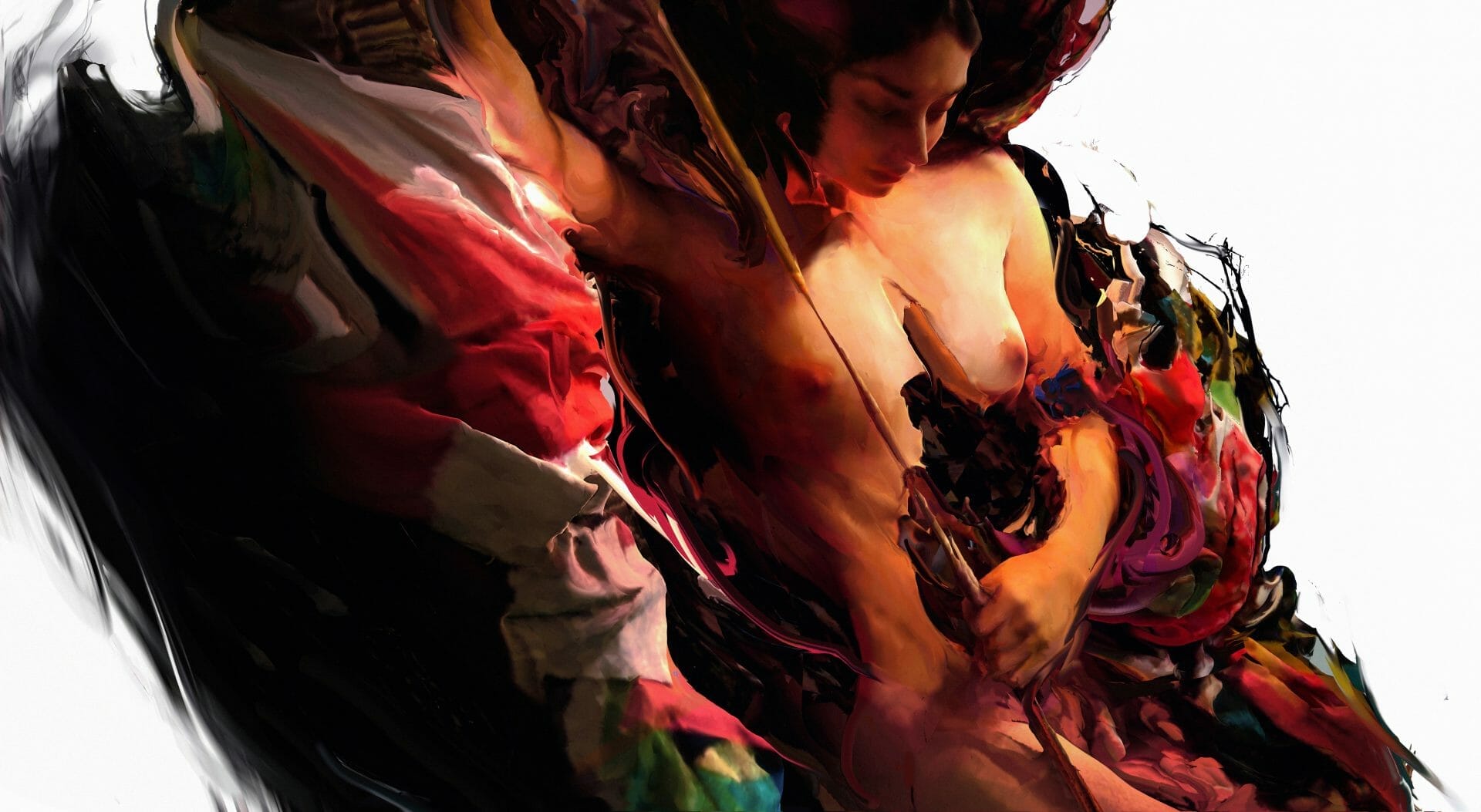
KC: How has your journey in cryptoart been so far?
LUCAS: After my first sale in late 2020, the whole NFT craze took off in early 2021. I got to see some months of the pre-Beeple world and then suddenly it all exploded. I was just a newcomer, and my first year and a half in this space were some of the most adventurous, stressful, and awesome times of my life, all unfolding in the middle of a global pandemic. Everyday I was getting to know new people and artists, encountering new ways of doing things and new values….it was mind blowing.
The freedom to call oneself an artist, or a collector is something I really love about this space. It opens so many new possibilities and opportunities for everybody who involves themselves in it.
Now, I am 2.5 years into my cryptoart journey, and things have chilled a little bit. I am currently in a process of recentering myself, and trying to build new ways of doing things, but at a pace that is sustainable for me in the long run. After two hectic years on Discord, Twitter and 12k tweets, I need a slower pace, time with myself, away from the keyboard, trying to tidy up aspects of my personal life, reading more, doing physical practices – all of it to tune into deeper aspects of creation, which I really feel is the center of my life.
KC: How does this focus on slowness and deep creativity go along with the popular idea that every artist is also – perhaps predominantly – a brand that must be managed on a daily basis to stay relevant in the attention economy?
LUCAS: Like I said earlier, there is a constant tension between the need for external visibility and approval, and the urge to stay independent, avoid being boxed in and alienated from yourself.
Fundamentally, I believe that over time, art will find its own way into the world (with a little help from the artist). The works of art that I really love stick with me for years, some of them forever. It doesn´t matter if the artist did 30,000 or 30 artworks in their life, I will remember them for these works.
For me, quality over quantity and the long-term over the short-term are two key choices I’ve made. But I reckon it is hard, and that I have been very fortunate. Everything is loud and fast paced in this attention economy, but as I have gained my artistic footing, I’ve recognized that I am doing my work for an art ecosystem that has not yet fully materialized. For example, I imagine large mixed reality installations in galleries and museums, where people will be able to experience a digital installation collectively without the need of VR headsets. To create work with the quality I envision will be needed for that future, I have to sustain a kind of practice that would be impossible if I was chasing the latest trends. They are fun and create culture and community, but on the other hand I still have so much to learn and develop to get closer to what I need to see.
KC: What are the main tools you use to create your works?
LUCAS: It depends on the idea of the work, but I like to start with sketches on paper or on Procreate, then I model on Zbrush, texture on Substance Painter and do the render on Blender. But sometimes I do video captures and integrate them into the digital sculptures, or use a greenscreen to get footage and then integrate it into a virtual set on Blender. My works are mainly made on a screen, but I am trying to integrate more and more elements from the physical world. To be honest I still miss the physicality of trad art, the smells, the tactile sense, the possibility of accidents, the time it takes for the materials to dry, but it’s a nice tradeoff for the possibilities of creating virtual spaces and objects that can be anything and anywhere.
KC: Your portfolio of tokenized work is quite diverse, are there some common threads that run through all your work?
LUCAS: I guess I am attracted to broken things. I like to dwell into the liminal zone between opposites, (maybe because I am Gemini😀). But yeah, the tension between private/social, traditional/contemporary, ancient vs. future, beautiful vs. abject, physical/digital, intimate/grandiloquent, painting/sculpting. I like to position myself right in the middle of these juxtapositions, in these undetermined spaces, maybe some new things can be found there.
Aphex Twin said something like “I like to make music that arise feelings in the listener that they cannot describe easily”. Is the same for me, maybe that´s why I feel reluctant to compartmentalize my body of work with definitions?
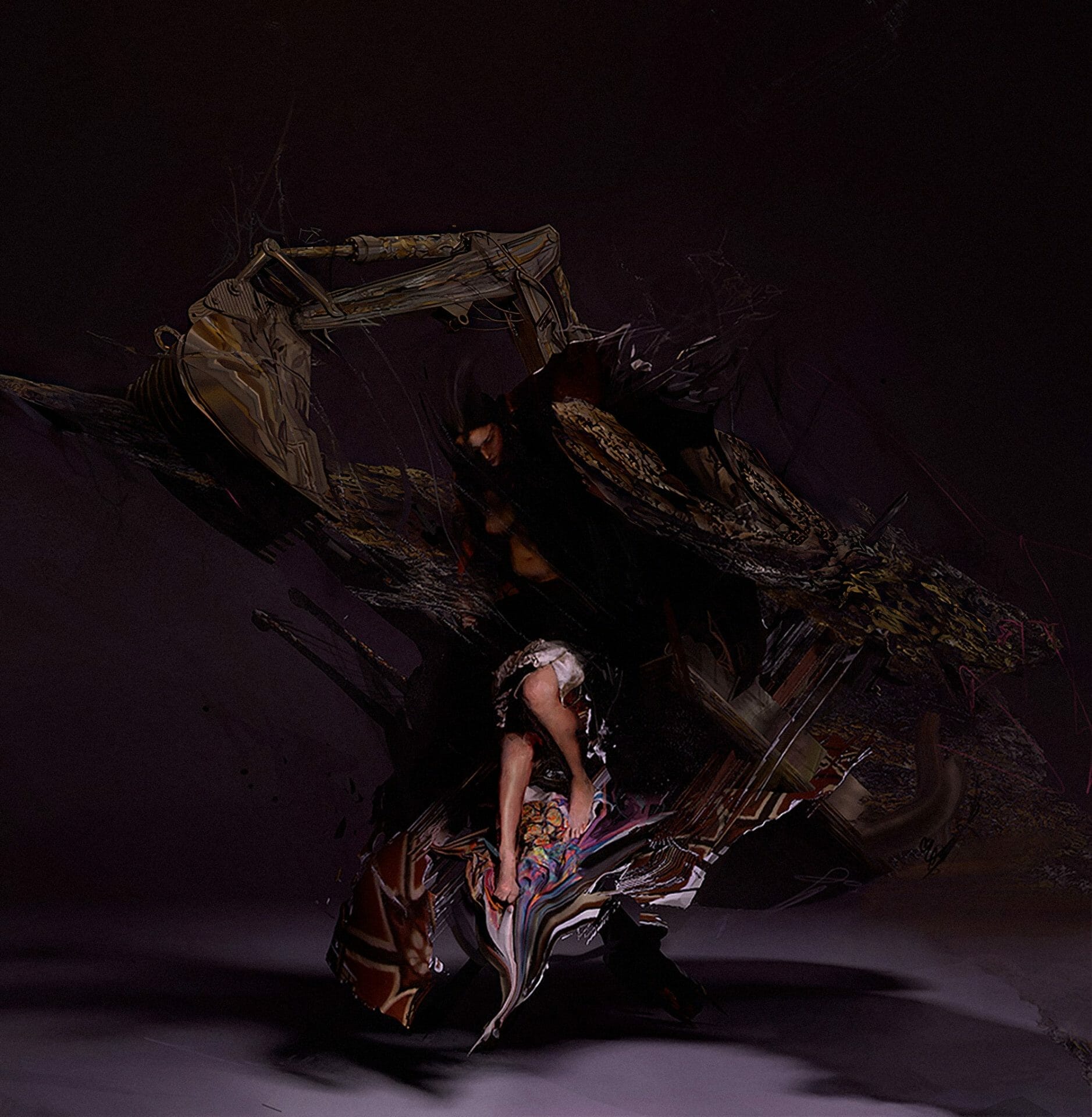
KC: Does it make sense for you to categorize your pieces into families of work, like thematic or stylistic subsets or periods?
LUCAS: I prefer not to lol. I feel that through the years I am creating a map of works that can be arranged in many groups and subgroups, and that the definitive map will be completed just before I die. And that of all my works, I will probably feel that just a bunch of them are relevant. This process of evaluation and re-evaluation is already happening with my older works. So, I feel like the categorization changes from year to year, and I love to be able to jump among zones of interest.
KC: Yeah, you know, going through your body of work regularly over the last two years, I’ve probably had 5-6 different favorites at different times. And I find that the sources of re-evaluation are different each time. Sometimes it is the work itself, finding and appreciating new aspects of it. Sometimes it is seeing the work in the context of your full body of work, for instance beginning to appreciate small, intimate scenes against a backdrop of larger, more violent scenes. Other times it is just a change of personal vibe, suddenly some works just start resonating more.
KC: Your attention to both concept and detail is incredible. I remember chatting with OMZ, who was blown away by the careful consideration you put into every detail of every piece you create. How long does it take for you to create a piece on average, from conception to conclusion?
LUCAS: Shoutout to OMZ. I really appreciated the fact he was asking me very detailed questions about my work for two days before deciding to buy specific works. All the questions were art related and helped me gain new views of the pieces. It feels special when someone takes collecting so seriously, like you do.
Going back to your question on completion times: To be honest, I cannot say. Some pieces literally took minutes to conceive and create, while others were years in the making. Generally, it takes me a lot of time to be fully confident that a piece has enough quality to be presented to the world. Usually, my method is working on several pieces at the same time, trying to forget about them so I can return and see them again with fresh eyes. If I let myself get too obsessed with a particular piece, and it pretty much always happens, I lose my sense of artistic discernment.
So sometimes works are archived for years. I have a piece that I started in 2019 that is not finished yet. I worked on it for several months in the beginning of the pandemic, and tried like 50-60 versions of it, but nothing worked. Just the other day I looked at it and I understood the basic things that were not working, and now I have the definitive version in my mind, and I just have to finish it. But desire can be a wild, untamed force, and I have to wait for the right moment to revisit that space and feeling in order to finish the work in a way that feels authentic, not forced.
The longest process for a finished piece so far was for Procesión. I spent two years working on it, on and off.
KC: Yes, that was a long process! You finished it a year ago, but I already saw quite developed parts of this piece in Artnome’s article on your art, which is now two years old.

LUCAS: Yes, one of the amazing things about the cryptoart space, in my case probably the main thing, is that if you are lucky enough to sell some pieces you can achieve a degree of “sovereignty of your own time”, like Colborn said in a interview. That is something I am truly grateful for, being able, at least temporarily, to focus on my personal way of doing things. I feel like this is a basic human right, but it´s not part of the system we live in today where you basically die if you don’t make money.
KC: What are you working on now? What’s next?
LUCAS: I am currently reconnecting with physical painting. In general terms, I want to get more physical, and I blame it on AI, lol. I am a bit of a contrarian, so if everybody is typing their art, I want to do it with my stained hands and my aching body. Don´t get me wrong, I love AI and all its possibilities, in fact I did a piece using it, but I don’t feel the same excitement when typing prompts as I do when I create physically. I feel an urge to go back to manual labor, to human intention, gesture, and error.
I am currently 3D scanning chunks of acrylic painting, playing with them in VR, trying to build a workflow where I constantly switch between digital and physical space. I am also trying to expand painting onto human bodies, something I feel is exciting.

This is a detail of a work in progress where I 3D scanned myself with some bodypaint, also scanned fragments of paintings, drawings, and manuscript texts, trying to create a unity out of diverse elements. For instance, it contains a scan of physical painting on plywood that was unintentionally left out in the rain and started to decompose outside for months. I am scanning it over time working on VR across its different stages (you can see part of it on the shoulder of the figure). The paint strokes on the plywood board were done with enamel paint, which is resistant to water, so while the board is gradually turning to dust, the paint strokes are getting freed from the plywood to a life of their own (a little like my process in VR, floating strokes of paint into space).
Watching this simple object transform made me think of death, cycles, the division of nature and human, the materiality of painting, painting as flesh…digital flesh? It´s kind of poetic and a mess too.
This process is still in its very raw initial stages but has been both fun and difficult so far. The final model will be an animated sculpture that I hope will feel somewhat like a painting. Again, this zone between the spatial and the pictorial.
KC: This is so interesting, knowing that it was this kind of interplay between conceptual exploration and technical experimentation which gave birth to your signature style in the first place!
LUCAS: Most of the time, it´s the thing first, and then the concept. For instance, this decomposing board on my terrace evoked all these interesting feelings, but it was only possible because I stopped and looked at it with fresh eyes. The story could easily have ended with me being annoyed because I lost the painting to the rain, but it turned into a very interesting process to behold for months (I am lucky to have a partner that allows me to have messy experiments like this all around the house 😊).
The other day I made a huge mess by mistake while working in my garden, and just after I cleaned up I thought “oh, I didn´t scan it”, and it was a bummer because I realized that the mess was actually quite beautiful and unique, and something I cannot ever replicate again.
I love those pieces of truth that happen in everyday life, and it’s an exercise to be open and receptive to them all the time.
I am also working with my usual collaborator in sound design Franco Bellavita on a physical installation that will be constructed during an art residence in the next two months. We have just been selected for this residence where we will have a studio space for all kinds of experimentation with image and sound, we both work with the concept of collage (both sonic and visual), it is very exciting! And then I am in the process of creating a continuation piece to Procesión, which will be part of a larger body of work, that will be finally part of a virtual reality/site specific piece.
Like I said, I envision this augmented reality future for art appreciation, and I am working towards that world, which I may or may not see during my lifetime. I hope to be able work on this in a regular, sustained rhythm, and at the same time be able to have quality time with my fellow humans, trying to help others and doing things like this interview, which I thank you and Fakewhale for proposing. It´s truly a blessed thing to share time and space with people that are aligned with our personal needs and dreams.
KC: That’s a great note to end this chat on. I cannot thank you enough Lucas. For taking the time to do this interview. For making art that resonates so deeply with me and many others and for giving something new, original, and important to the world. Most of all though, for being such an open, decent, humble yet contrarian and independent human being and artist. It’s a rare cocktail.
____________________________________________________________________________________________________________________
Lucas’ collectors include Krybharat, Fewocious, Josie Bellini, Fastackl, Metakovan, Rudy, Kate Vass, Colborn, The Alchemist, and OMZ.
Artnome’s article: “Constructive instability – the art of Lucas Aguirre” is available here:
You can find Lucas tokenized work here:
- Lucas Aguirre on Superrare
- Lucas Aguirre on katevassgalerie.com
- Lucas Aguirre on Foundation
- Lucas Aguirre on Vertical Crypto
- Lucas Aguirre on niftygateway.com
Discover our permanent collection:
karmacowboy
There is no rehearsal.
You may also like
Fakewhale in Conversation with Johannes Thiel
Introducing Johannes Thiel Born In 1999, Germany Visit Artist Website Johannes Thiel navigates throu
Marina Abramović at the Stedelijk Museum in Amsterdam
Echoes of Performance: The Marina Abramović Retrospective at the Stedelijk Museum In the heart of A
Living Machines: Geumhyung Jeong’s Dance of Humanity and Technology at ICA
Entering Geumhyung Jeong’s Under Construction at the ICA in London is an experience that provo



